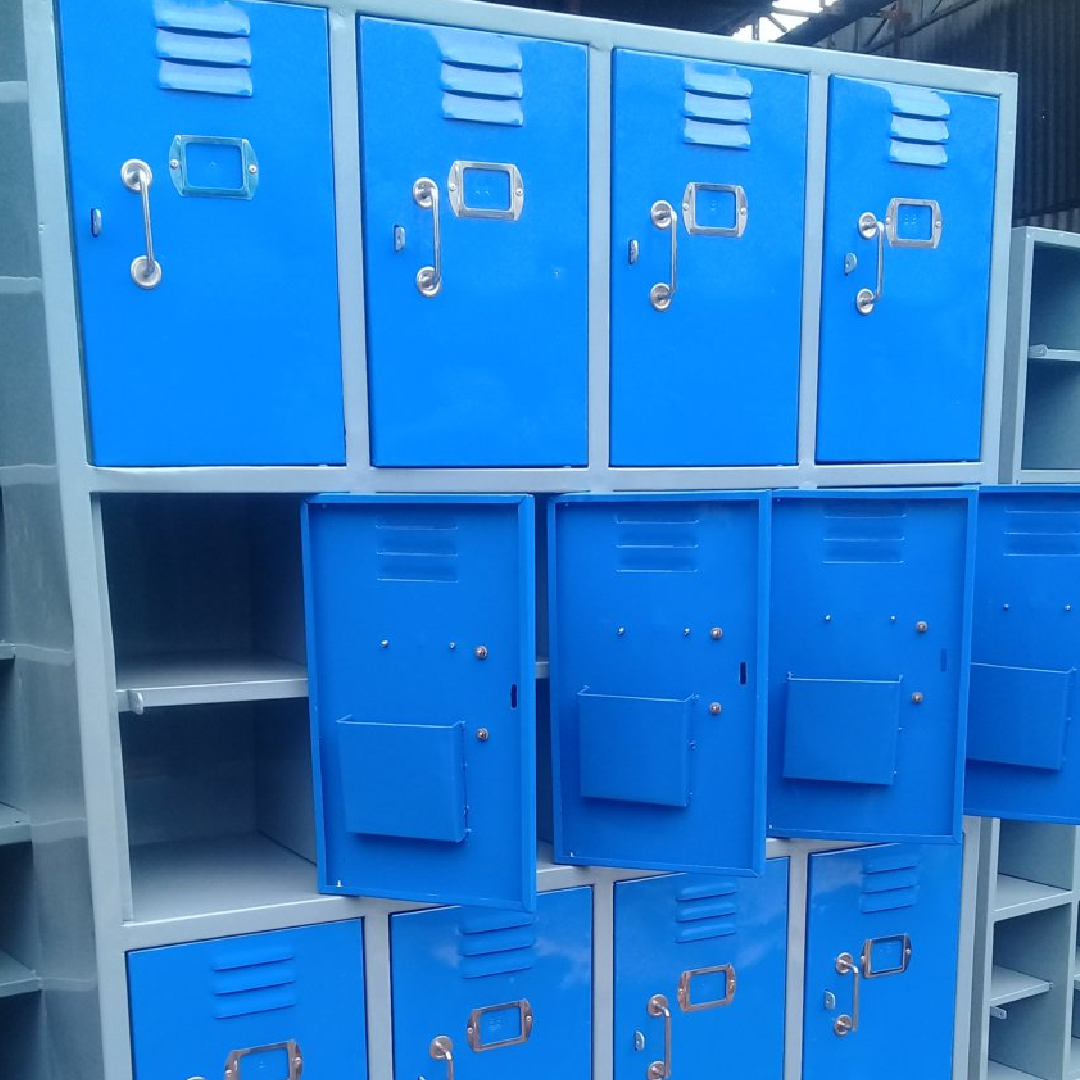Introduction:
Warehousing, once viewed as a simple storage solution, has evolved into a dynamic industry that demands efficient operations and advanced technology. As businesses strive to meet the challenges of globalization, e-commerce, and customer expectations, optimizing warehouse functions becomes essential. Among the solutions that stand out are the Warehouse Management Systems (WMS) and Transport Management Systems (TMS).
However, when we integrate these with the cutting-edge technology of dimensional scanners, warehouses are transformed into high-octane operational hubs. This synergy not only promises streamlined operations but also redefines accuracy and productivity.
As we embark on this exploration, we’ll delve into the intricacies of these systems, discover the profound impact of their integration, and unearth the possibilities that lie ahead for businesses worldwide.
Understanding WMS (Warehouse Management Systems)
What is WMS?
At its core, a Warehouse Management System (WMS) is the technological heartbeat of modern warehouse operations. This digital platform, integrating an array of functionalities, plays a pivotal role in directing the storage, movement, and management of inventory. By providing a centralized system, it eliminates inefficiencies, reduces human error, and allows for the intricate dance of goods movement, tracking, and storage to unfold with clockwork precision.
Role and benefits of WMS in warehouse operations:
Embracing a WMS translates to more than just digital transformation; it’s about reshaping the very ethos of warehousing.
The advantages stretch far and wide:
- Streamlined Inventory Management: No more overstocking pitfalls or stockout nightmares. With real-time tracking, businesses can ensure that they have just the right amount of stock. This efficiency not only reduces holding costs but also ensures that products are always available when customers want them.
- Optimized Labor Management: Through task automation and efficient routing, WMS ensures that labor resources are used optimally. This means fewer man-hours wasted and a boost in overall productivity.
- Reduced Errors: Manual processes are prone to errors, but with a WMS in place, automated data capturing and validation drastically reduce mistakes, saving costs and enhancing customer satisfaction.
- Enhanced Customer Service: With accurate and prompt order fulfillment, customer satisfaction is bound to increase. Plus, with real-time data at their fingertips, customer service teams can provide instant updates to clients, enhancing transparency and trust.
Exploring TMS (Transport Management Systems)
What is TMS?
A Transport Management System (TMS) is akin to the logistical brain of a modern enterprise. It’s a digital framework designed to streamline transportation logistics, focusing on planning, execution, and optimization of moving goods. At the heart of a bustling global commerce network, TMS bridges the gap between order processing and actual transportation, ensuring goods are moved efficiently and cost-effectively.
Importance of TMS in transport and delivery logistics:
Stepping into the realm of TMS is like unlocking a new dimension in supply chain management.
It’s pivotal for various reasons:
- Cost-Effective Routing: TMS, using advanced algorithms, creates optimal routes for transportation. This intelligent routing not only conserves fuel but also ensures faster delivery times.
- Carrier Collaboration: The TMS framework enables seamless coordination among multiple carriers. This harmonization ensures timely deliveries and can significantly reduce transportation costs.
- Real-time Visibility: The essence of modern supply chains is speed and transparency. TMS provides a real-time view of goods in transit, empowering businesses with actionable insights and appeasing customers with timely updates.
- Freight Audit and Payment: TMS simplifies the freight audit and payment processes, ensuring discrepancies are caught and addressed swiftly. This results in substantial cost savings and strengthens carrier relationships.
- Enhanced Decision-Making: Armed with analytical tools, TMS offers businesses critical insights into their transportation logistics, enabling informed, strategic decisions.
Challenges and Solutions in Integration
While the benefits of integrating WMS, TMS, and dimensional scanners are substantial, it’s essential to be aware of potential challenges that may arise during the implementation process.
Here, we’ll explore common challenges and offer practical solutions to ensure a smooth integration journey.
- 1. Data Compatibility and Integration Complexity:
Challenge: Integrating different systems often involves dealing with data compatibility issues and complex integration processes.
Solution: Prioritize compatibility when selecting WMS, TMS, and dimensional scanner solutions. Consider using middleware or integration platforms to streamline data sharing between systems.
- Staff Resistance to Change:
Challenge: Employees may resist new technology and processes, fearing job displacement or increased workloads.
Solution: Invest in comprehensive training programs to ensure staff members are comfortable with the integrated systems. Highlight the benefits of improved efficiency and reduced manual tasks.
- Initial Investment Costs:
Challenge: Integrating multiple systems can be cost-intensive, which may deter some businesses.
Solution: Calculate the return on investment (ROI) for the integration project by considering reduced operational costs, improved accuracy, and increased customer satisfaction. The long-term benefits often outweigh the initial costs.
- Scalability Challenges:
- Challenge: As your business grows, you may encounter scalability issues with your integrated systems.
- Solution: Choose systems that offer scalability options or consider cloud-based solutions that can adapt to your evolving needs.
- Data Security and Privacy Concerns:
- Challenge: Integrating systems means sharing sensitive data between platforms, raising security and privacy concerns.
- Solution: Implement robust security measures, including encryption and access controls, to safeguard your data. Comply with relevant data protection regulations to protect customer information.
- Maintenance and Updates:
- Challenge: Regular maintenance and updates are essential to keep integrated systems running smoothly.
- Solution: Create a maintenance schedule and stay updated with software patches and system upgrades to ensure continued reliability.
- Performance Monitoring:
- Challenge: After integration, it’s crucial to monitor system performance and identify areas for improvement.
- Solution: Implement performance monitoring tools and regularly review key performance indicators (KPIs) to identify bottlenecks and areas that require optimization.
By addressing these challenges proactively, you can ensure that your integration project is successful, and you can fully realize the benefits of streamlined warehouse operations.
Benefits of Integrating WMS and TMS
Now that we’ve explored the significance of WMS and TMS individually with challenges and solution for their integration, let’s unlock the true potential that lies in their integration. When these two systems join forces, remarkable transformations occur within warehouse operations.
- Seamless Data Exchange: When WMS and TMS work together, data flows seamlessly between them. This means that information about inventory status, order processing, and transportation logistics is always up-to-date and accurate. The result? Improved decision-making and faster response times when addressing customer demands and supply chain disruptions.
- Efficient Order Fulfillment: Imagine a scenario where a customer places an order on your e-commerce platform. With integrated WMS and TMS, the order can be processed swiftly. The WMS ensures that the ordered products are readily available, while the TMS optimizes the transportation route. This leads to faster order fulfillment and, consequently, increased customer satisfaction.
- Inventory Optimization: By integrating WMS and TMS, businesses can gain a holistic view of their inventory and transportation operations. This visibility allows for proactive inventory management, helping to prevent overstocking or stockouts. As a result, capital is used more efficiently, and customers receive their orders on time.
- Cost Reduction: Cost savings are a driving force behind the integration of WMS and TMS. Automation and optimization reduce labor costs, minimize errors, and lower transportation expenses. Companies can allocate resources more efficiently, ultimately improving their bottom line.
- Enhanced Scalability: As businesses grow, so do their warehousing and transportation needs. Integrated WMS and TMS offer scalability, allowing companies to adapt to changing demands without overhauling their technology stack. This flexibility is crucial in today’s dynamic business environment.
The Role of Dimensional Scanners
Now, let’s introduce the star of the show – the dimensional scanner. These advanced dimensional scanners are like the eyes of your warehouse, capturing precise measurements and data about products. When integrated with WMS and TMS, they take warehouse optimization to the next level.
- Accurate Dimensional Data: Dimensional scanners provide accurate measurements of products, including length, width, and height. This data is essential for optimizing storage space, calculating shipping costs, and ensuring that products fit into shipping containers perfectly.
- Automated Data Capture: Gone are the days of manual measurements and data entry errors. Dimensional scanners automate the data capture process, reducing human intervention and increasing accuracy. This not only saves time but also eliminates costly mistakes.
- Real-time Inventory Management: Imagine knowing the exact dimensions of every product in your warehouse in real-time. This data allows for intelligent slotting, ensuring that products are stored efficiently. It also helps in making informed decisions about which products to ship together for maximum space utilization.
- Shipping Cost Optimization: Dimensional data plays a vital role in calculating shipping costs accurately. By integrating dimensional weight scanner with TMS, businesses can optimize their shipping strategies, choosing the most cost-effective carriers and packaging options.
- Reduced Returns and Customer Satisfaction: When products are shipped accurately and fit perfectly in their containers, the likelihood of returns due to damage or incorrect sizing decreases significantly. This leads to higher customer satisfaction and cost savings.
Future Trends in Warehouse Optimization
As technology continues to advance, the future of warehouse optimization looks promising. Here are some trends to watch out for:
- Artificial Intelligence (AI): AI-driven predictive analytics will become more prevalent, helping warehouses anticipate demand, optimize inventory, and further reduce costs.
- Internet of Things (IoT): IoT devices will provide real-time visibility into warehouse operations, allowing for more data-driven decision-making and proactive issue resolution.
- Robotics and Automation: The use of robots for tasks like picking, packing, and inventory management will become more common, increasing efficiency and reducing labor costs.
- Sustainability: Warehouses will focus on sustainability, with technologies like solar power, energy-efficient lighting, and eco-friendly packaging becoming the norm.
That leaves us to have a detailed overview of how the streamlining and optimization of warehouses operations are overtaken by introducing and integrating the Warehouse management system (WMS) and Transport Management system (TMS) into their businesses.
Conclusion:
In conclusion, optimizing warehouse operations through the integration of WMS, TMS, and dimensional scanners is no longer a luxury; it’s a necessity in today’s competitive business landscape. These systems provide the tools and insights needed to streamline operations, reduce costs, enhance accuracy, and ultimately, exceed customer expectations.
As technology continues to advance, businesses that embrace these innovations will have a distinct advantage in the world of warehousing and logistics.
So, whether you’re a manufacturer, distributor, or logistics provider, the time to explore and implement these dimensional scanner is now. Unlock the full potential of your warehouse and stay ahead of the competition in the ever-evolving world of business.





